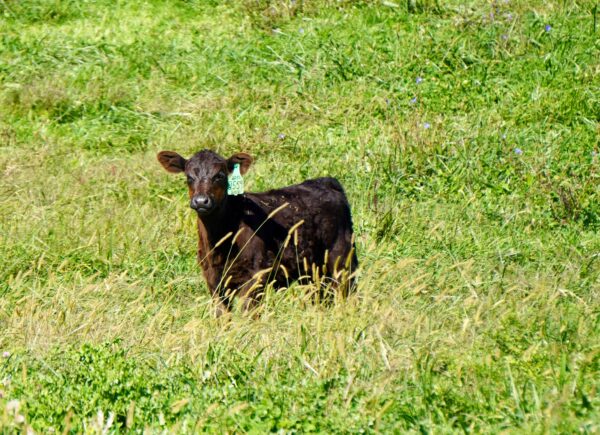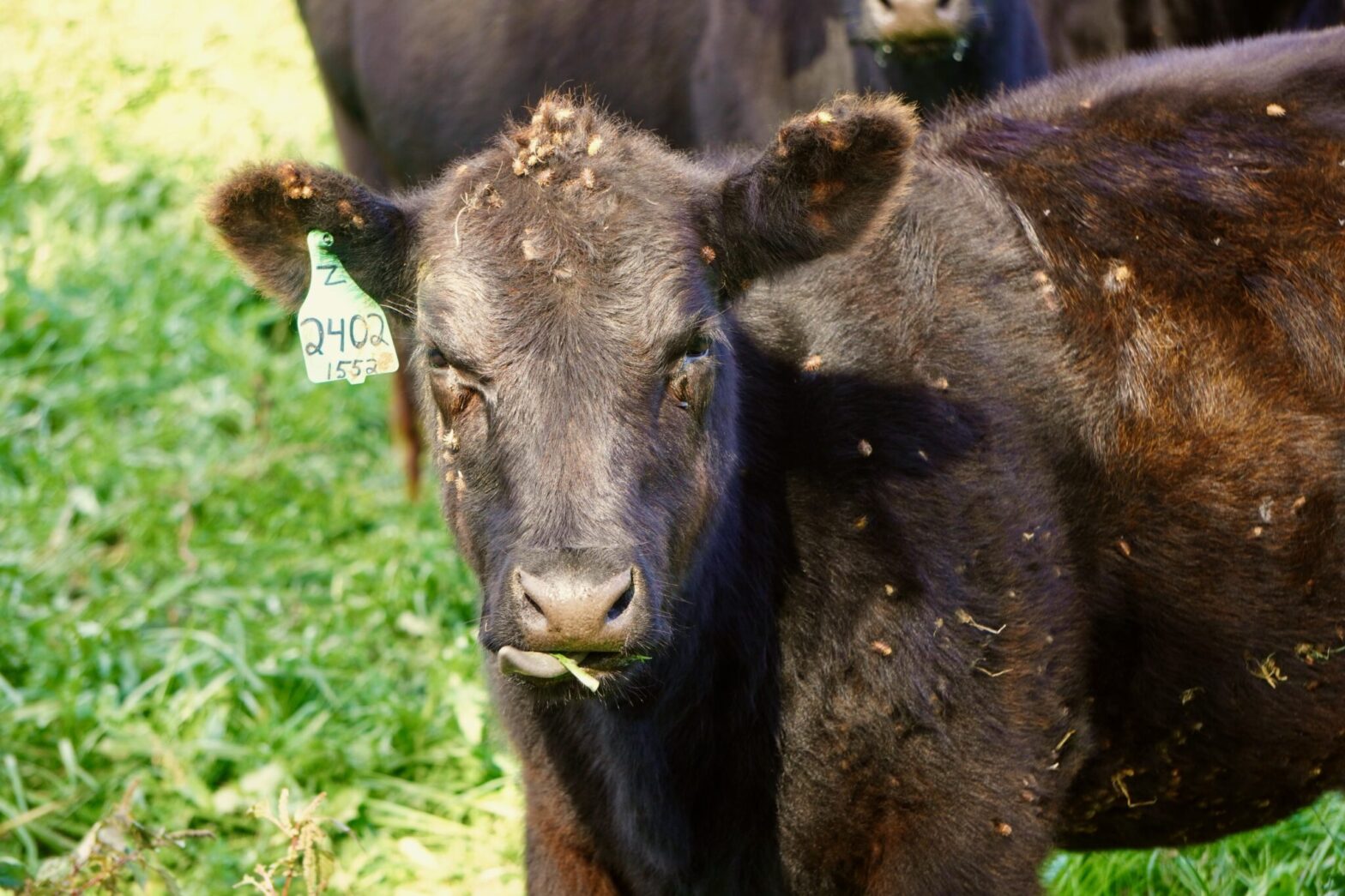As farmers at Hedgeapple Cattle Ranch in Frederick County say, their cows live good lives, even when they have a bad day.
The cows graze all day on the grassy hills of the Buckeystown farm: two herds with 45 pairs of heifers and steers and their calves. And even as autumn arrives and the cold temperatures arrive, the cows still have months of grazing ahead of them. Their pastures remain grassy – by nature.
The farm uses a practice called rotational grazing, in which the herds are moved from pasture to pasture and the pastures are then allowed to regrow over a period of 30 days or longer.
The practice allows the farm to continue grazing through January, farm manager Chris Zook said, saving them about $200 a day that they would need to purchase bales of hay to feed their hundreds of Black Angus and Red/Akaushi Wagyu cattle.
“Take care of your grasses and they will take care of you,” Zook says.
The practice was highlighted Thursday during a tour of the farm, one of several farm visits in the area conducted by nonprofits Chesapeake Bay Foundation and Mobilize Frederick. The tour, which focused on regenerative agriculture, attracted a combination of farmers, elected officials and environmentalists.
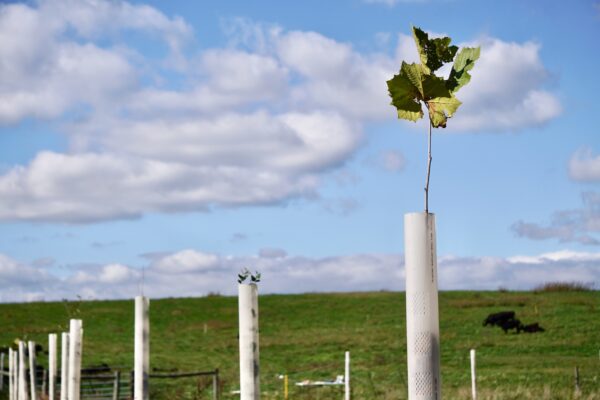
In addition to the economic advantages mentioned by Zook, the practice also brings with it a number of ecological advantages.
By allowing the grass to grow back quadrant by quadrant, the farm anchors its soil in place, reducing the amount of runoff during rainstorms from its fields into the nearby Monocacy River, which flows into the Potomac, which flows into the Chesapeake Bay.
So the farm is just one of many cogs in an overall effort to reduce the flow of harmful pollutants – including nitrogen and phosphorus from manure – into the country's largest estuary.
Reducing agricultural pollution was one of the most stubborn points of the federal plan to improve the bay by 2025, but it failed. The agreement is currently undergoing a reconstruction process that has been described by some as unambitious. Discussions are ongoing and Bay States leaders are expected to sign a final agreement in December.
Policymakers have also achieved success in other areas, such as modernizing sewage treatment plants and planting thousands of filter oysters. But as the population of people and animals increases in the Bay watershed, slowing pollution from city streets and agricultural fields is proving challenging
Although they may sound simple, regenerative practices like rotational grazing can actually require significant additional labor – and capital. For example, Hedgeapple Farms needed to ensure that water could be transported to all grazing areas, either via water pipes or portable tanks.
Hedgeapple largely self-funded the changes, but there are some funds farmers can draw on, including from state and federal sources such as the USDA's Natural Resource Conservation Service.
YOU MAKE OUR WORK POSSIBLE.
In addition, farmers have a variety of other concerns, including drought conditions and rising costs for fuel, equipment and animal feed. Many have part-time jobs that make extra work too burdensome, Zook said.
But a big challenge is getting the word out, said assistant farm manager Seth Young.
“A lot of people are told about it. But they never show the actual results,” Young said.
Some farmers also have difficulty adopting new practices because they cling to tradition. They farm just like their grandparents or great-grandparents, said Mark Townsend, a farmer who also serves as treasurer of the Maryland-Delaware Forage Council. Perhaps that means they are following an old saying, “Plant in the dust, and your trash cans will break,” which urged farmers to sow seeds in dry, dusty conditions.
But conservationists are urging farmers to plant “cover crops” in the off-season. In Maryland, the Department of Agriculture provides post-harvest compensation payments to farmers who plant barley, rye and clover to keep their fields standing during the off-season. It can be an intimidating change, Townsend said.
“To drive your planters through 8-foot rye? It's like, 'Oh my God.' It's terrible,” Townsend said. “You think, 'This is completely contrary to everything I've ever experienced. And so there's a huge mental barrier, and rightfully so.'
The farm’s commitment to sustainability extends far beyond just rotational grazing. The farm also used grants from the Chesapeake Bay Foundation to plant more than 2,400 trees around the pastures, which will also help reduce runoff into the monocacy.
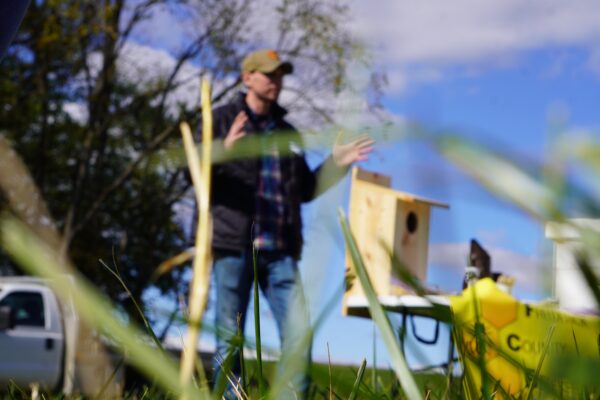
Initially, Zook said he feared the size of the trees would reduce the space in each pasture, but ultimately that wasn't the case. Now he's focusing more on the benefits, including opportunities for cattle to seek shade on hot summer days. The farm's practices are also beneficial for other creatures such as honey bees, said John Gardner, a local resident who cares for six hives on the property.
Hedgeapple provides a high-quality home for the bees, who often leave their hives to forage, as their fields have a greater variety of plants than other farms.
“I tell people: When I see huge, golden, huge acres of corn, I'm looking at a desert from a bee's perspective,” Gardner said.
Corn is pollinated by wind and does not need to attract pollinators. And pesticides and herbicides used in corn fields also jeopardize bees' pollen-gathering efforts, Gardner said.
The lanky tall grasses in Hedgeapple's fields also provide ideal habitat for grassland birds that rely on pasture habitat but are threatened by urban sprawl and changing agricultural practices, said Gabriel Foley of the Maryland Bird Conservation Partnership.
The partnership uses nest boxes to attract both American kestrels and barn owls to these habitats, where they can feed on insects and small mammals, Foley said.
Perhaps the most popular tool for demonstrating the value of regenerative practices like cover crops and reduced grazing is a rainfall simulator: essentially a showerhead aimed at various soil samples to show the effects of plantings on runoff.
Glass jars hang at each sampling area so viewers can see how muddy the rainwater runoff becomes. Thursday's selection included tilled soil, uncultivated soil capable of growing a small amount of vegetation and soil with cover crops.
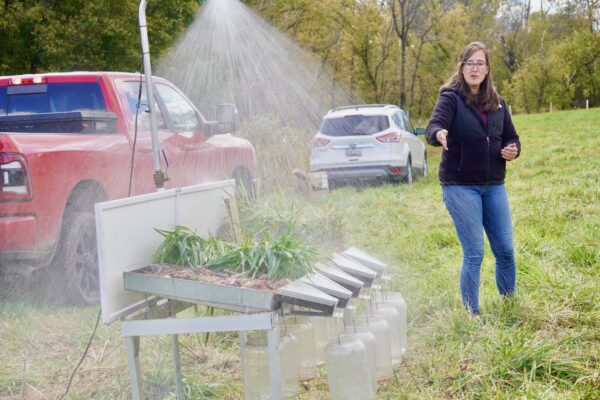
But the winner, perhaps unsurprisingly, was the patch of dirt and tall grass dug up in a corner of Hedgeapple Farm that morning. The water in this glass was almost clear.
When the simulator is running, rain sprays out of the tap, sending about an inch of rain onto the small plots within minutes. It's an unusual – but not impossible – price. However, it still shows how important it is to provide soils with diverse plant life, said Townsend.
“Unless you were absolutely prepared to take on so much water all at once, you're kind of left high and dry, irony intended, right?” Townsend said. “You’re not getting the water you actually need into that soil because you don’t have the mechanisms to absorb it.”
Amanda Grev, forage and pasture specialist at the University of Maryland Extension, said the practices are intended not only to save the bay but to save farmers money, including on fertilizer, that would otherwise be washed away during severe storms.
“The goal of these practices is to save you money in the long run, right? We're not trying to spend thousands and thousands of dollars just for regeneration,” Grev said. “We may have to spend a little money initially, but how much do we save in soil and nutrients?”
